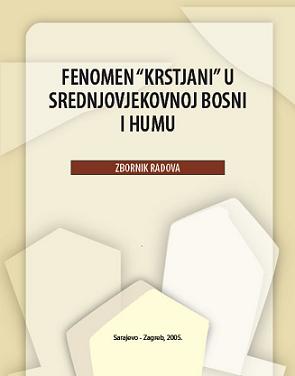Crkvene prilike u zemljama hercega Stjepana Vukčića Kosače
The church conditions in Herceg Stjepan Vukčić Kosača's countries
Author(s): Ivica Puljić
Subject(s): History, Political history, Middle Ages, Theology and Religion, 15th Century
Published by: Institut za istoriju
Summary/Abstract: The noble Kosača family were originally estate owners from Podrinje. Their rise to the greatest noble family in the kingdom was due to the expansion of the Bosnian state towards the south and to the east. Vlatko Vuković (who ruled up till 1392), already laid the foundation of what was to be known later on as Herzegovina, on whose magnitude Sandalj Hranić (who ruled from 1392 – 1435) further expanded, along with Stjepan Vukčić (who ruled from 1435 – 1466).
“Stjepan Herceg of Saint Sava, lord of Hum and Primorje, great Bosnian duke of (rusaga,) prince of Drina and more”, as he presents himself, is beyond a doubt the greatest Bosnian-Hum leader of the middle ages, due to the role he played not only in the Bosnian kingdom, but also in general during his times. It is therefore not surprising that within the Church of the Bosnian-Hum Christians he had a pivotal role.
First of all, it is important to note that the Kosača family, including Stjepan Herceg, according to historical sources, were true followers of the Church of Bosnian-Hum Christians”. They were also very tolerant in religious matters in those times, not only in the lands under their control, but also towards families where Bosnian Christians, Catholics and Orthodox lived freely one beside the other. One of the reasons for this tolerance of theirs can be attributed to the political climate of those times in which Herceg had to constantly battle against accusations of heresy. A even greater motive can be found in the religious diversity that existed in his lands. While Podrinje and the border areas of the Hum lands along with Bosnia, followed the Church of the Bosnian-Hum “Christians”, many facts point out that despite the hardships caused by the wars with Serb leaders and the losses against “Christians”, the population of Hum and Primorje were still predominately Catholic. Orthodoxy prevailed in the areas which were once firmly part of the Serb State, from Trebinje towards the East, with its spiritual center at the monastery of Mileševo. This religious diversity certainly had a great influence upon the land owners and their conduct towards their subjects.
Book: Fenomen "Krstjani" u srednjovjekovnoj Bosni i Humu
- Page Range: 239-267
- Page Count: 29
- Publication Year: 2005
- Language: Croatian
- Content File-PDF

